Hiking in New Zealand is one of the most popular things for both locals and travellers to do. However, not everyone is aware of all the things they should know before embarking on a hiking trip in New Zealand.
It’s known by many names to many people – to some, it is known as Aotearoa. To others, it’s the Land of the Long White Cloud, but you may know it better as New Zealand.
It’s a destination that is on so many people’s travel bucket list, and for good reason, as there is so much to see and explore. This is especially true when it comes to the diverse nature on offer across the country.
You’ll find active volcanoes, glaciers, golden beaches, vast forests, fiords, snowy mountains and the largest lakes.
There are many ways to explore New Zealand’s untamed wilderness, but the best way by far is by hiking tracks and trails.
There are many hiking trails spread across the country, each giving an incredible opportunity to experience this country in all its glory.
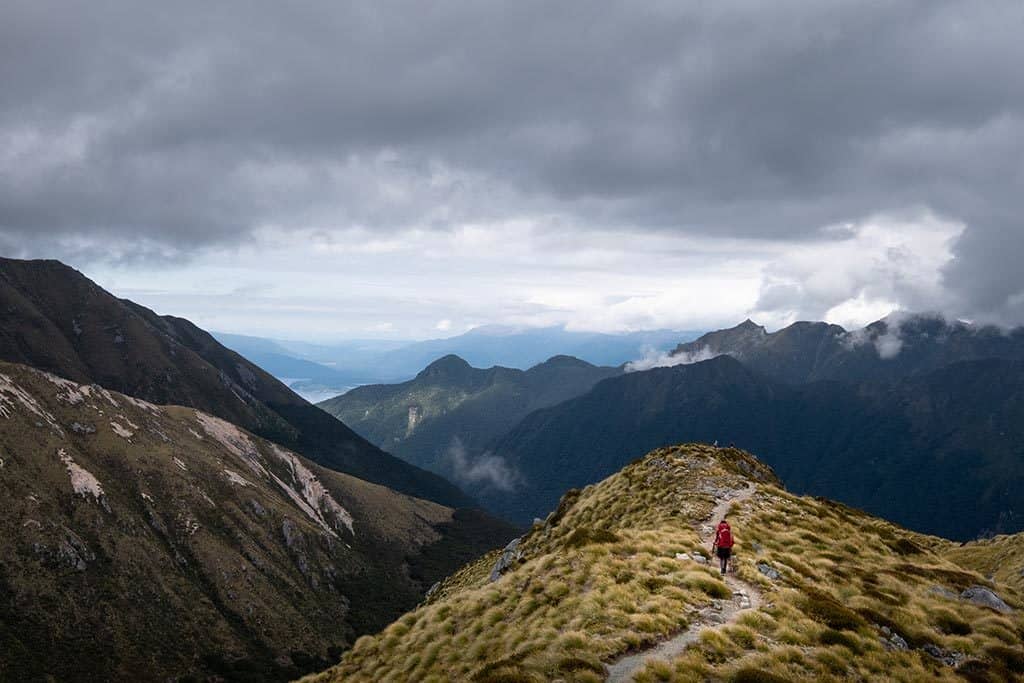
In this complete guide to hiking in New Zealand, I will be sharing all that you need to know for a successful trip out on the trails.
We will be covering the best time to go hiking, the different types of tracks and trails, the backcountry hut system, what you can expect to see, as well as some top New Zealand hiking tips.
When is the best time to go hiking in New Zealand?
The absolute best time to go hiking in New Zealand is during the summer months, as this is when the weather is at its best.
New Zealand is located in the southern hemisphere, which means that the summer starts in December and ends towards the end of February.
The weather is at its peak during January and February, but unfortunately, so are the hiking trails. During summer you can expect to find the trails and tracks at their busiest.
The autumn months are also a great time to go hiking in New Zealand, especially during March and April. The weather remains good during these months and the trails are a little less in demand than during the summer peak season.
If you fancy avoiding some of the crowds you’ll definitely prefer to hike during the autumn months.
Trail and track types
One of the best things about hiking in New Zealand is that there are trails and tracks to suit everyone.
Whether you are just looking for a family-friendly hike or a challenging multi-day trip, you will be able to find it here.
There are three main types of hiking tracks in New Zealand; short walks, day hikes and multi-day hikes.
Short walks
Short walks are the easiest walking tracks and are usually suitable for the vast majority of people. Short walks can last for as little as 20 minutes or as long as 2-3 hours, so most are very family-friendly.
Day hikes
Day hikes are a little more challenging as the length and duration of the hikes are usually much longer than short walks.
Day hikes can take anywhere from 3-8 hours to complete, but some day hikes can still be very attainable for most people.
Multi-day hikes
The most demanding hiking trails are multi-day hikes. These are usually long-distance tracks that require you to carry more equipment, food and water than day hikes.
A multi-day hike will either be an overnight trip or longer, and some of the longest tracks take upwards of 9 days to complete. The most popular multi-day hikes are the country’s ten Great Walks, which brings us nicely to the next point.
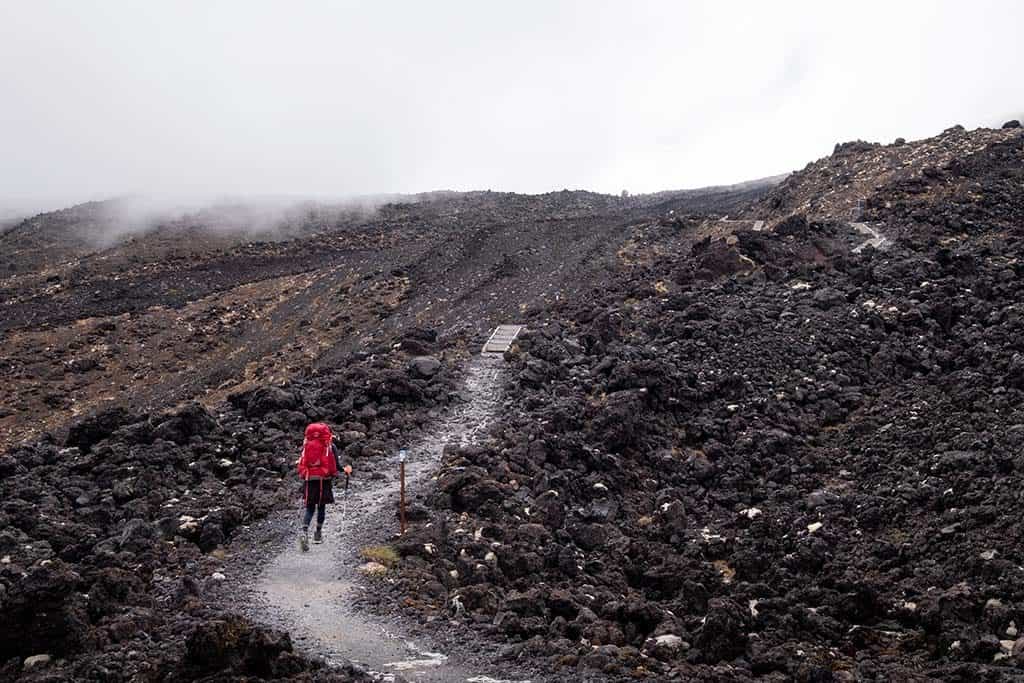
The New Zealand Great Walks
New Zealand’s most popular hiking tracks are the Great Walks. There are ten Great Walks in total spread across both the North Island and South Island, as well as Stewart Island/Rakiura.
These walks are aptly named as they travel through some of New Zealand’s most amazing scenery.
The tracks and trails are also of a high standard, as they are very well maintained. This is what makes the walks so great!
The walks themselves can take anywhere from 2-6 days to complete which means you will stay out in the backcountry for a few days.
Each Great Walk has backcountry huts and campsites along the route, which will provide safe refuge during the night.
Although you don’t need to make a booking for the actual walks, you do need to book your stay at each hut or campsite along the tracks.
Places for these are in such high demand that you need to book months in advance if you want to secure your place.
If you want to learn more about the walks, you can check out the Department of Conservation website for more information.
The Backcountry Hut System
New Zealand boasts an impressive backcountry hut system which makes the experience of hiking deep into the wilderness so much more enjoyable.
There are almost 1,000 huts to stay at throughout New Zealand, ranging from basic shelters all the way up to the most comfortable Great Walk huts.
The majority of huts will have toilets, running water, bunks with mattresses and a source of heating.
With most huts, you will need to bring your own stove to cook with, but some of the Great Walk huts actually have gas cooking facilities included.
Huts on popular routes also have a warden based there during the peak season, who can answer any questions you may have.
Most huts operate on a first come first served basis; however, popular huts must be booked in advance, similar to the Great Walk huts.
As well as the huts, there are plenty of campsites along the trails if you prefer the privacy that camping provides. Most campsites are located near or outside the huts.
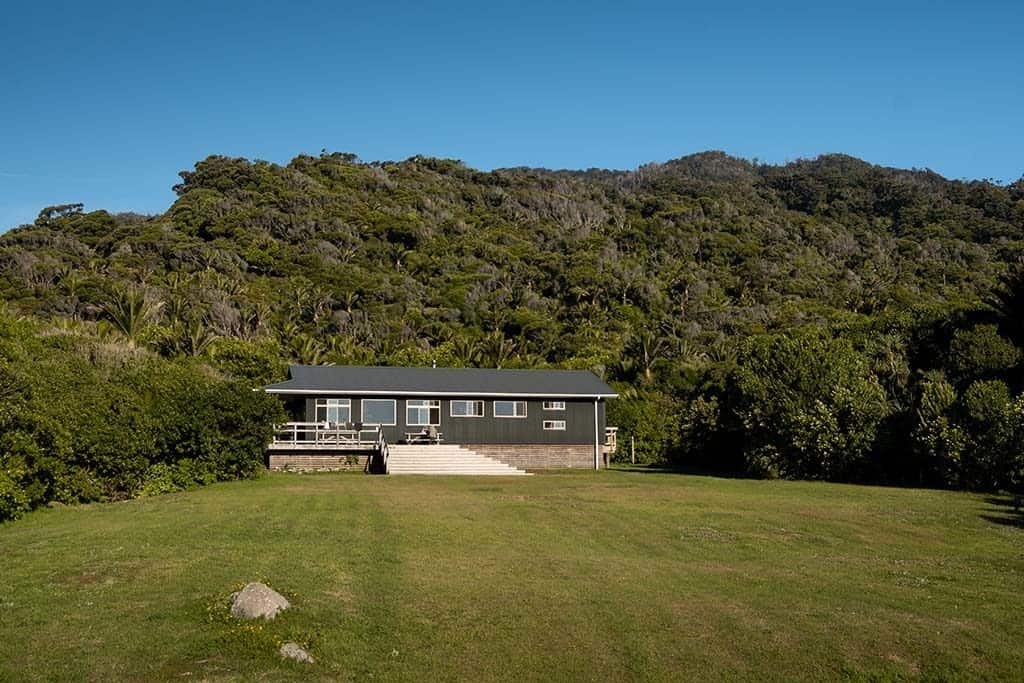
Tips for your New Zealand hiking trip
If you have never hiked in New Zealand or are new to hiking in general, there are a few things you should be aware of.
First of all, to make sure you have the most enjoyable time on the trails, you will want to make sure you choose the right track.
As I have already discussed, there are lots of trail types, so make sure you check the Department of Conservation website to find a suitable hike.
There are also a few things you can do to make sure you are being as safe as possible whilst on your hike.
Fortunately, there are no dangerous animals to worry about in New Zealand. However, the weather can be unpredictable and hazardous at times.
If anything happens to go wrong, it’s good to have a backup plan. Below you can find a few points that will help to keep you safe while you’re out hiking.
Most hiking tracks are marked with orange triangles throughout. You should make sure you are following these so that you remain on the correct route.
Let someone know your hiking plans and when you expect to arrive back from your hike. If they don’t hear from you they will be able to raise the alarm to the authorities.
Most huts will have an intentions book that you should fill out before you start each section of your hike. If you happen to go missing, the intentions book is a written record that the local authorities can use to help find you.
Take a Personal Locator Beacon with you. This is a device that, once activated will send a signal to Search and Rescue with your location. They can be a lifesaver if you get in trouble.
What can you expect to see?
There is so much incredible nature to explore in New Zealand, so when it comes to hiking, you really are in for a treat.
The country is so geologically diverse, which means you’ll constantly be discovering something new.
To see New Zealand’s astonishing active volcanic landscapes, you’ll want to go hiking in the central North Island.
Most of the volcanoes can be found within the Tongariro National Park. However, there is a particularly beautiful volcano located to the west in the Taranaki region.
Travel a little further up the North Island, and you will find Rotorua, which is an amazing geothermal area.
The South Island is where you will find New Zealand’s tallest mountains located in the Southern Alps.
The Southern Alps is a mountain range that stretches most of the length of the South Island. It is here that you will find the country’s stunning glaciers and best alpine landscapes.
The best hiking trails that give you access to this amazing nature can be found in Aoraki/Mount Cook National Park, Fiordland National Park and Mount Aspiring National Park.
Throughout both the North and South Islands, there are exceptionally beautiful beaches and coastlines to explore.
To experience them, head to Northland, The Coromandel or the Bay of Plenty on the North Island.
Abel Tasman National Park and the West Coast on the South Island is also home to some particularly stunning coastal hikes.
There are also hundreds of lakes to be found throughout the entire country.
On the North Island, you will find large lakes which have resulted from volcanic eruptions. The South Island has the country’s most beautiful lakes, many of which have the Southern Alps as a backdrop.
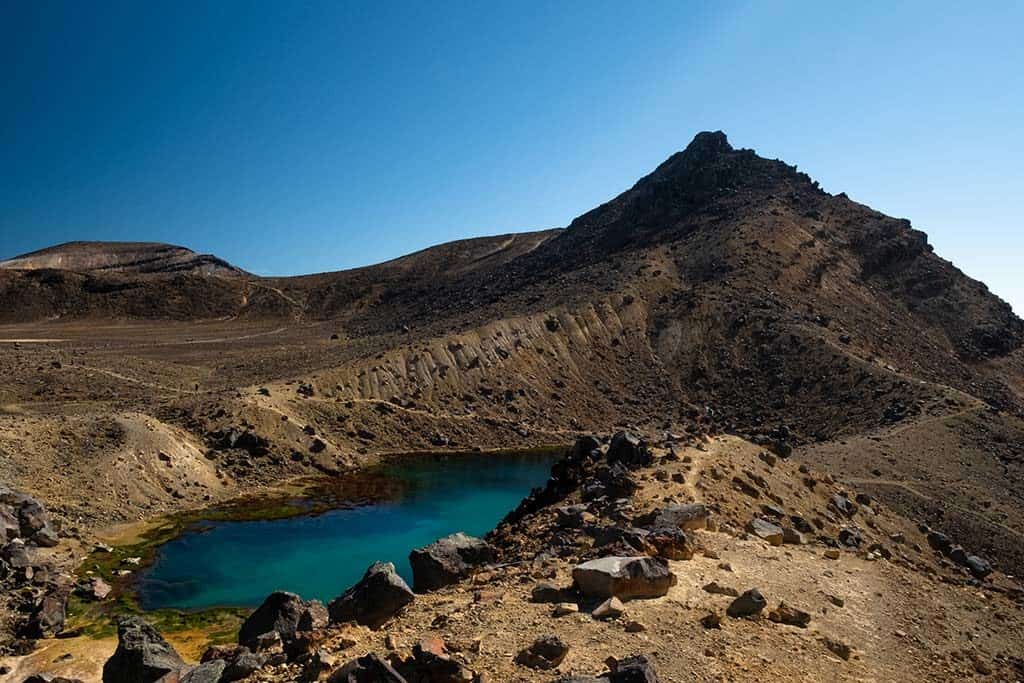
North Island Hikes
Now we have covered everything you need to know about hiking in New Zealand, it’s time for the fun part, the hikes themselves.
I have picked a few hikes on both the North and South Islands that you definitely won’t want to miss. Let’s start off with hikes on the North Island.
Tongariro Alpine Crossing
The Tongariro Alpine Crossing is a 19.4 km day hike that passes through the incredible volcanic landscapes of the Tongariro National Park. The Alpine Crossing is commonly referred to as New Zealand’s best day hike because of the amazing and unique nature on show.
This hike takes 7-8 hours to complete, so be prepared for a full day of hiking.
Highlights along the trail include the highest point of the track at Red Crater. From here you will be able to enjoy the views of Red Crater as well as the surrounding landscape.
The Emerald Lakes and Blue Lake are also a sight to behold.
Tongariro Northern Circuit
For a more in-depth look at the Tongariro National Park, you’ll want to try the Tongariro Northern Circuit.
This passes through some of the same areas as the Alpine Crossing, however, the 43.1 km track takes 3-4 days to complete.
This is one of the New Zealand Great Walks, which means you’re guaranteed an amazing backcountry experience.
Lake Waikaremoana Track
Located on the eastern side of the North Island in Te Urewera lies beautiful Lake Waikaremoana. Here you can find another New Zealand Great Walk, which is lesser known than the other nine. This is the Lake Waikaremoana Track.
This Great Walk is 46 km in distance and takes you on a journey from the south to the north side of the lake. The hike takes 3-4 days to complete and is one of the country’s best lakeside hikes.
The highlight of this hike are the views from Panekire Bluff and Panekire Hut, where you will be able to look over the entire lake.
If you like the sound of this Great Walk, you can learn more with this excellent guide. The guide shares all you need to know, as well as some amazing photographs of the hike.
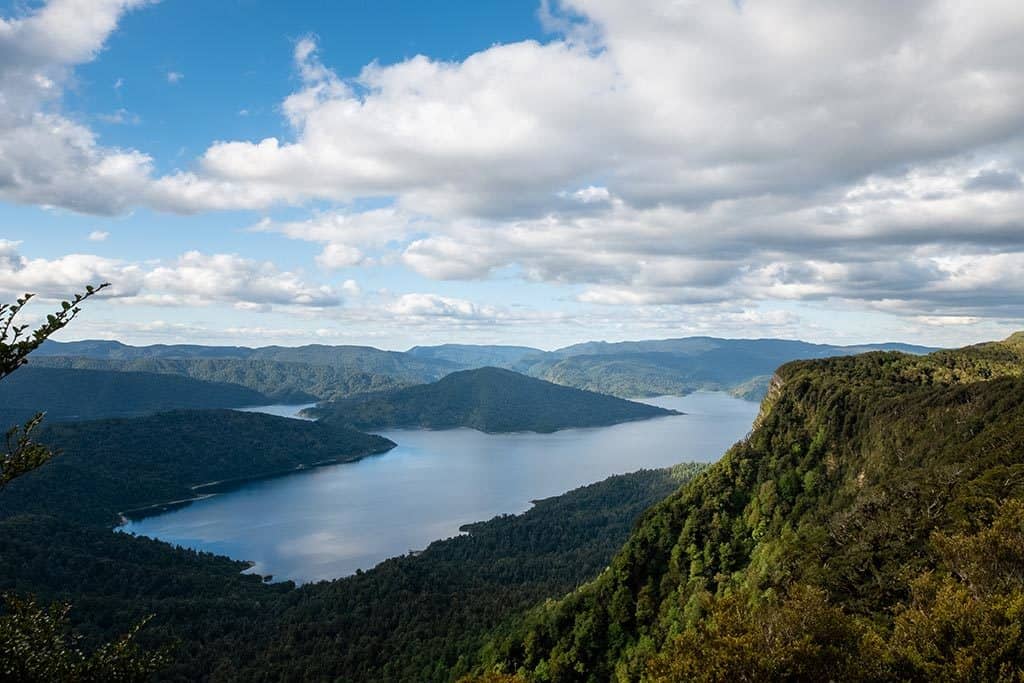
South Island Hikes
Next up are the South Island hikes of which there are so many to choose from. I have selected four tracks to share with you; a short walk, a day hike and two multi-day hiking trips.
Lake Matheson/Te Ara Kairaumati Walk
Up first, we have the Lake Matheson/Te Ara Kairaumati Walk, which is a short walk located on the West Coast of the South Island. This 2.6 km walk circles the edge of the lake and takes 1 hour and 30 minutes to complete.
This walk is very popular because of its beautiful location and is a very family-friendly track.
If you want to catch the lake when it’s at its best, try and get out for a walk early in the morning or later in the evening. This is when the lake will be at its calmest, and you’ll be able to see the famous mirror reflections of Aoraki/Mount Cook and Mount Tasman.
Hooker Valley Track
The Hooker Valley Track is an easygoing day hike located in Aoraki/Mount Cook National Park.
The track is 10 km in length and takes roughly 3 hours to complete. The terrain is flat throughout, so this is one of the easier day hikes in the country.
The trail passes through the Hooker Valley, where you will be able to enjoy the surrounding glaciers and the stunning peaks of the Southern Alps.
The track ends at Hooker Lake, which has many icebergs dotted throughout. Behind the lake stands Aoraki/Mount Cook, which is New Zealand’s tallest mountain. The view from here is incredible.
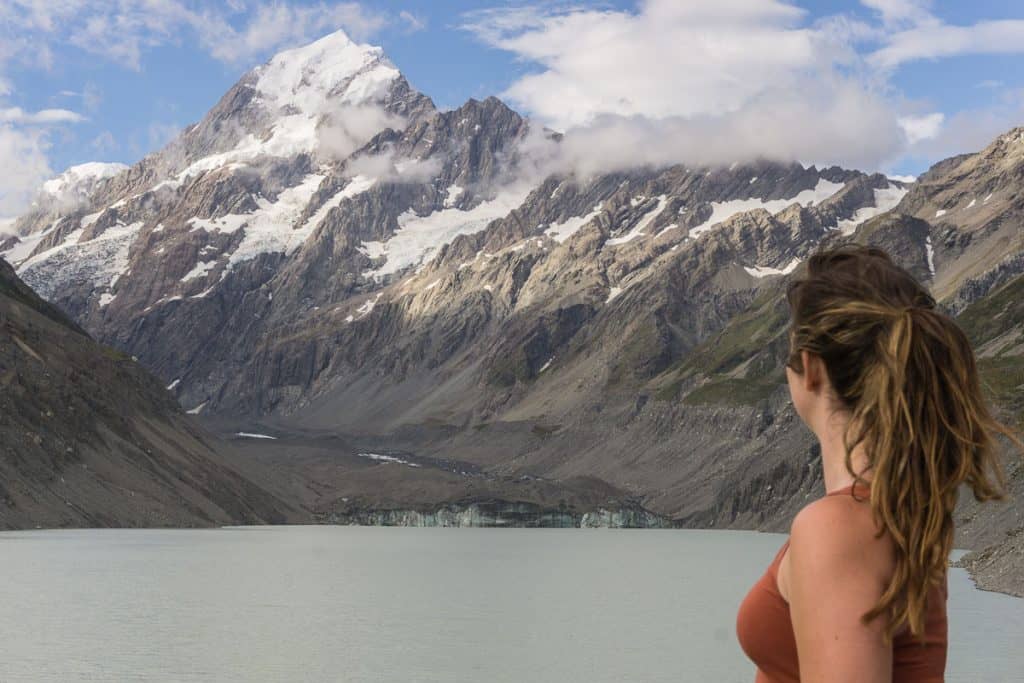
Heaphy Track
The Heaphy Track is another member of the New Zealand Great Walks. This hike gives you the opportunity to venture deep into the untamed wilderness of Kahurangi National Park.
The 78.4 km walking track takes 4-6 days to complete, so this hike is a real backcountry experience.
Throughout the hike, you will be treated to a wide range of nature and wildlife. The hike starts among vast beech forests; as the hike continues, the forests are made up of tropical species such as nīkau palms. You can just do the beginning of this as a day walk (or half day really) up to Key Summit.
The final stretch of the hike takes you along the West Coast coastline with beaches and the sea by your side.
Takahē and Kiwi, which are two of New Zealand’s vulnerable flightless birds, also live along the track, so make sure you keep a lookout for them.
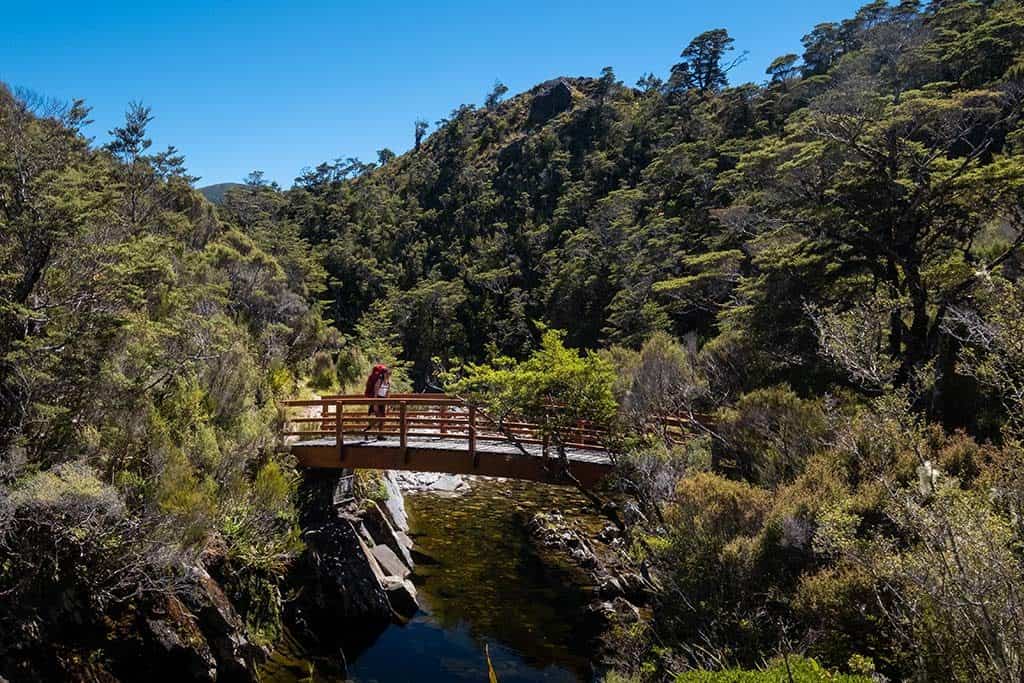
Kepler Track
The Kepler Track is the last hike on the South Island I will be sharing with you.
This is yet another of New Zealand’s famous Great Walks and one of three set in Fiordland National Park. The 60 km loop track takes approximately 3-4 days to complete, similar to many of the other Great Walks.
The hike is the perfect multi-day trek for anyone that loves mountains and breathtaking alpine landscapes.
The hike starts along the shores of Lake Te Anau, which is New Zealand’s second-largest lake. The hike also finishes along a lakeside as well, this time next to Lake Manapouri.
The highlight of this hike is the alpine part found in the middle section. The views of the surrounding mountain ranges and both lakes are incredible.
That wraps up this New Zealand hiking guide, the country is home to so many hiking trails and now you have all the information you need to conquer them all.
It doesn’t matter where you are in New Zealand; you’re never too far from a top-quality hiking track. So what are you waiting for? Get over here for some world-class hiking, I’ll see you out there.
This is a post by Jonny Baker, the photographer and general earth enthusiast behind the travel blog The Photographers Passport. With his blog, he aims to provide the best information to help others explore and adventure this beautiful world. Jonny is originally from the United Kingdom but currently spends most of his time exploring the country of New Zealand with his camera in hand.
